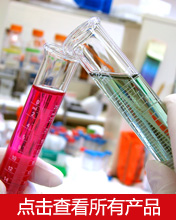
YINGKOU SANZHENG ORGANIC CHEMICAL CO., LTD. LIAONING CHINA
Address: No. 51, Xinxinli, Daqing Road, Zhanqian District, Yingkou City, Liaoning, China電話:0417-3638868
Fax: 0417-3638868
Email: ykszgs@sohu.com
Zip code: 115001
URL::091071.cn
Synthetic ammonia manufacturers tell you the process flow
1 The raw material gas after CO shift and CO2 removal in the gas refining process still contains a small amount of residual CO and CO2. In order to prevent the poisoning of ammonia synthesis catalyst, it is stipulated that the total content of CO and CO2 shall not exceed 10 cm3/m3 (volume fraction). Therefore, before the raw material gas enters the synthesis process, the final purification of the raw material gas must be carried out, that is, the refining process.
2 The crude raw gas produced from various raw materials in the desulfurization and decarbonization process contains some sulfur and carbon oxides. In order to prevent the poisoning of the catalyst in the synthetic ammonia production process, it must be removed before the ammonia synthesis process. Steam using natural gas as the raw material In the conversion method, the first process is desulfurization to protect the conversion catalyst. The partial oxidation method using heavy oil and coal as raw materials determines the position of desulfurization according to whether a sulfur-resistant catalyst is used for carbon monoxide conversion. There are many types of industrial desulfurization methods, usually physical or chemical absorption methods, such as low-temperature methanol washing method (Rectisol), polyethylene glycol dimethyl ether method (Selexol) and so on. After the raw material gas is converted by CO, in addition to H2, there are components such as CO2, CO and CH4 in the shift gas, of which CO2 has the most content. CO2 is not only the poison of ammonia synthesis catalyst, but also an important raw material for the manufacture of nitrogen fertilizers such as urea and ammonium bicarbonate. Therefore, the removal of CO2 from the shift gas must take into account both requirements.
3 Generally, the solution absorption method is used to remove CO2. According to the different properties of absorbents, it can be divided into two categories. One is the physical absorption method, such as the low-temperature methanol washing method (Rectisol), the polyethylene glycol dimethyl ether method (Selexol), and the propylene carbonate method. One is the chemical absorption method, such as the hot potash method, the low-heat Benfield method, the activated MDEA method, the MEA method and so on.
Carbon monoxide conversion process In the production of synthetic ammonia, the feed gas produced by various methods contains CO, and its volume fraction is generally 120. The two components required for synthetic ammonia are H2 and N2, so the CO in the synthesis gas needs to be removed. The transformation reaction is as follows: CO+H2O→H2+CO2 ΔH=-41.2kJ/mol
Since the CO shift process is a strongly exothermic process, it must be carried out in stages to facilitate the recovery of reaction heat and control the residual CO content at the outlet of the shift section. The first step is high temperature conversion, which converts most of the CO into CO2 and H2; the second step is low temperature conversion, which reduces the CO content to about 0.3. Therefore, the CO shift reaction is not only a continuation of raw gas production, but also a purification process, creating conditions for the subsequent decarbonization process.
